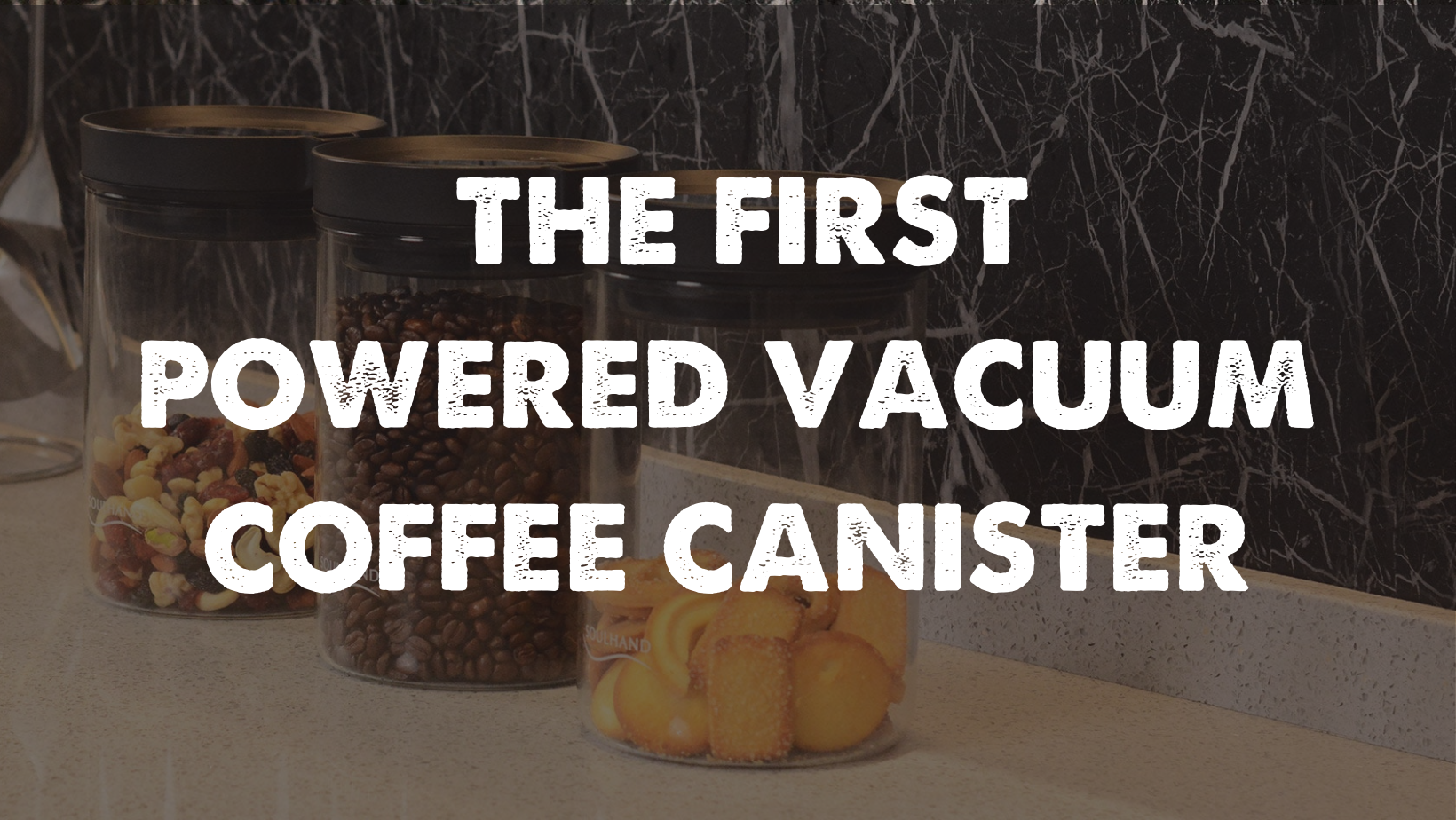
Does the Comandante justify its ~$500 price tag?
Hobbies can get expensive.
But that's the fun of hobbies; you can go down a rabbit hole and pimp out your car, or your bicycle, your camera and of course, your home coffee setup!
However, you don't want to overspend on unnecessary accessories - especially when it might not add a great deal to the flavour of your coffee.
We know from our own research that the grinder is probably one of the most essential accessories to own. Yet, it's the most often overlooked. So why is it that we are happy to spend thousands on a new coffee machine but buy a cheap $60 blade grinder - or worse, don't buy one at all?
The Comandante c40 is a $500 hand grinder. Yes, that's right: a HAND grinder. Why on earth would you spend so much money on something that you have to manually rotate over and over to get some grind for your coffee? That was my thought exactly...until I got my hands on it to try.
A LOOK AT THE LINEUP

To create a comparison, I chose to test the Comandante Mk3 side by side with two other cheap hand grinders: The Hario Coffee Hand Mill (~$100) and the Baccarat Brillante (~$50).
Before we get into it, we would like to say that this IS an UNFAIR FIGHT. We understand that the grinders in the experiment are not even in the same league as the COMANDANTE grinder, so keep that in mind as we continue on.
A good grinder needs to be consistent. Over everything else, consistency of grind is THE most important thing, so I will focus on this as our benchmark for each of the grinders. I will also compare the ergonomics, materials used, ease of use, and overall appeal.
Even though most people won't (and probably shouldn't) use a hand grinder to make Espresso, I wanted to test the hand grinders on the fussiest brewing method, and Espresso easily shows any flaws in the brew.
We took a range of hand grinders off the shelves around Brisbane and put them to the test. These grinders were readily available over the counter; there are hundreds of options you could choose from online. However, most newcomers to home coffee will go out and buy the first thing readily available more often than not. Here is the lineup:

First up, we have the cheapest of the bunch, the BRILLANTE by Baccarat, starting off the list at around the $50AUD mark. We picked this up at a kitchenware store; they had plenty in stock, no concerns so far. Bacarrat is more known for manufacturing homewares such as knives, pots and pans etc. Needless to say, I was dubious that it could even grind fine enough for Espresso.
Looking at the design of the grinder, you can see a pretty decent set of ceramic burrs with everything folding away into an excellent streamlined cylinder. On the bottom, it has a nice glass jar for grinds. However, everything else (except the burrs) is plastic. Take the Upper Chamber off, and you get a TINY little handle that unscrews slightly to extend. This comes into play during the experiment, so keep a mental note here. There are 5 preset grind settings ranging from FINE - COARSE. I'm unsure if I can calibrate the burrs internally to change them, so let's assume I can't.

Second, we have the HARIO COFFEE MILL, sitting around the $100AUD mark.
I picked this up at a coffee roastery off a wall that is filled with coffee gear. This would be the next step a new coffee hobbyist would go to, stepping up from general store-bought to a more specialised coffee focused product. At first glance, it has a beautifully designed wooden base and a brass looking topper and crank. Open it up, and the base doubles as the grinds catcher, with fully adjustable CERAMIC BURRS underneath. These adjustment settings seem unlimited, seemingly going so fine that the burrs were touching. However, there are ZERO indicators for how fine or coarse the setting is, so I just had to eyeball it and tried to make it as fine for Espresso. The handle is noticeably longer, giving me a greater ability to grip while grinding ( the Baccarat would only let me hold it one particular way, and it made my hand hurt).
Is this the perfect middle ground? I thought the same thing…

Then there is the MAIN EVENT, The COMANDANTE C40. Sitting around the $500AUD depending on which cosmetic finish you choose, a little over 4x the price of the HARIO and 8x the price of the BRILLANTE.
How could a grinder be worth so much more, and what could you possibly get in value from that sort of a step up?
First up, let's take a look at the base unit. Made of SOLID POWDER COATED STAINLESS STEEL (also available in wood veneer). The handle is made from oak wood, with a stainless steel crank arm running into a stainless steel axle, connected to the patented "high-alloy and high-nitrogen stainless steel burrs" designed to stay sharp and super strong forever. The design of the burrs means that you get consistent contact between bean and blade, offering an incredibly consistent grind every time you use it. The handle itself is SUPER long, providing comfort and ease of grinding. The adjustment settings on the base of the unit are clearly identified and measured (34 clicks in total, but there's an optional accessory that gives you 64). They are also UNIVERSAL across all Comandante products, meaning the grinder is calibrated precisely the same all over the world, and there are forums out there with others sharing the exact recipes to their perfect brews, which you can copy. The glass jar to catch the grinds doubles as a dosing cup that fits across almost every brewer type out there (58mm portafilters, Flair Espresso, Aeropress and Mokka Pot, just to name a few).
WATCHING THE NAKED EXTRACTION
At this stage, each grinder looks on par. The Brillante and the Harios Ceramic Burrs should provide a nice even grind with little retention, the Hario does seem to have an endless step-less adjustment for grinds, so there is no reason it shouldn't produce great results. The Brillante's 5 preset steps, however, maybe its downfall.
Now each of these grinders should really be used for filter-based coffee making. Espresso machines are fussy, so you wouldn't really be using a hand grinder for one of these - not to mention the time and effort it takes just to grind 22g. Espresso machines are not that portable, either. However, I wanted to see a few things from these grinders; UNIFORMITY of grinds as well as the EASE of grinding. So we put each of them through the most demanding test we could think of, running a shot through our commercial-grade SYNESSO MVP HYDRA.
Let’s put them to the test!
We are dosing at 22.5g of our own Il Caramello blend. We aim to get 45ml out in ~27seconds.

BRILLANTE:
Because of its TINY handle, it took me almost 6 minutes of solid grinding to get 22.5g out. You just don't get enough rotation of the handle to make a dent in the grinds in the chamber. So prepare to take some time to get all your beans ground. On its finest setting - and dosing almost double what you would be putting into a filter as a coarser grind - this does make sense as to why it took so long. The plastic parts do have some movement when grinding, so I feel like I'm going to break something.
The results show for themselves: inconsistent. Although at zero retention, getting 22.5g of grinds out, the finest setting is nowhere near the fineness of Espresso, which isn't the BRILLANTE's fault necessarily; it just means that this grinder is more suitable for pour-overs/ French Press etc. As you can see in the shot that we poured, it just wasn't up to the job at all.

HARIO:
The motion of grinding is much better, a clear step up from the Brillante. I ground the entire dose in half the time. I did have to hold it on the table to grind because if I picked it up while grinding, it came apart. On my first try, the adjustment gear slipped whilst grinding and turned the espresso grind coarser than that for a plunger. Attempt 2: I tightened the screw much harder, and that kept the grind size consistent. The shot was marginally better than the Birllante, but I couldn't get the grind fine enough (or at least, I couldn't tell if it could because there were no indicators).


In conclusion: The Hario Coffee Mill is not useful for Espresso grind either.
COMANDANTE:
With its beautfiully designed handle and axle connection I barely feel like I'm grinding anything. In one word: effortless. I set the grind size to 10 clicks with an approximate grind time of 45 seconds, the Comandante holds its own against some electric grinders, which is absurd. At no point did it seem wobbly, flimsy or in any way about to break. Thank you German engineering!
Dosing out 22.5g with no grind retention (same as the two before) but with a much easier and much more consistent result. The grinds are perfect.

We searched for the odd inconsistent grind, but we couldn't see a single granule out of place. The shot extracted beautifully, albeit a little quickly (I could have gone finer as I had set this to 10 clicks - remember, you can copy this exactly on any Comandante).
With 34 settings available, and expansion packs available online that can go to 60+ grind settings, you are able to do EVERYTHING you need with the one grinder, from TURKISH COFFEE (finest) all the way to cold brew (coarsest) with ease.
CONCLUSION
Again I would like to say that this is an unfair experiment to the other two grinders. This in no way has shown the potential that they have in their own lanes. What I discovered was the difference between the cheap option and the investment option.
There are hundreds of hand grinders out there, all of which do different things better than each other. I'm sure you could spend hours gathering each grinder, nitpicking and comparing to one another. That's not what we are here to do.
What we have found is that the ONLY way to get the consistency of top quality grounds is through dedicated engineering. The ONLY way to be able to fine-tune your brew efficiently and easily is through careful design. The ONLY way to truly immerse yourself into the brilliance of your coffee is through companies that live and breathe coffee themselves.
A cheap grinder will give you a cheap result. There is a place in the world for budget grinders. There is a purpose for a grinder that JUST does its job. If you want more, if you're going to learn, if you want perfection, know this: You cannot cheat performance.
And Yes, I am a true believer in the Comandante now. It IS DEFINITELY worth the price tag.
Written By Liam Burge
You can watch the video of the experiment here




